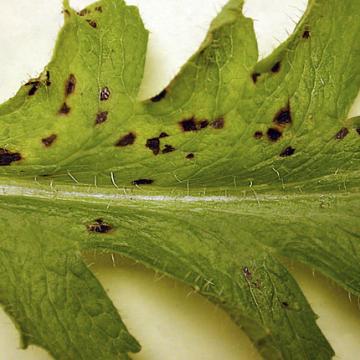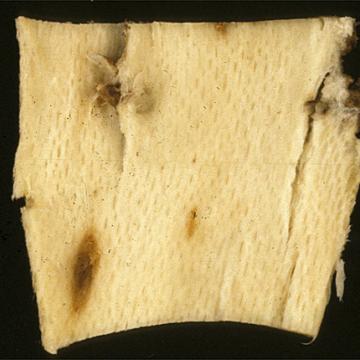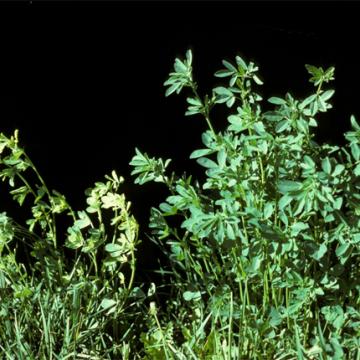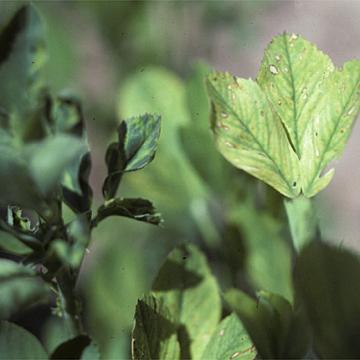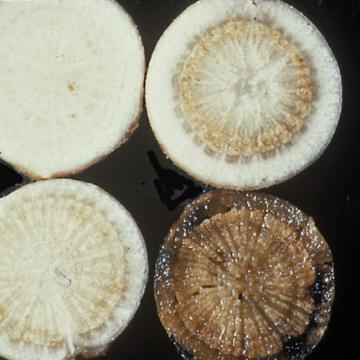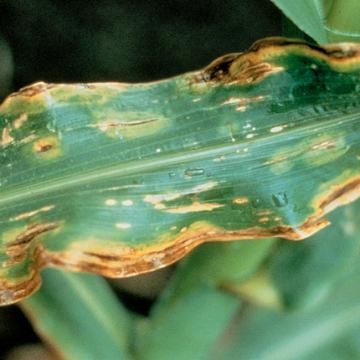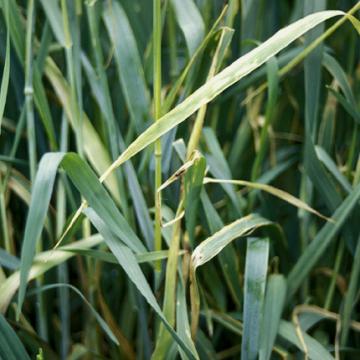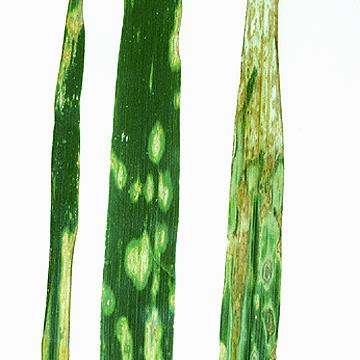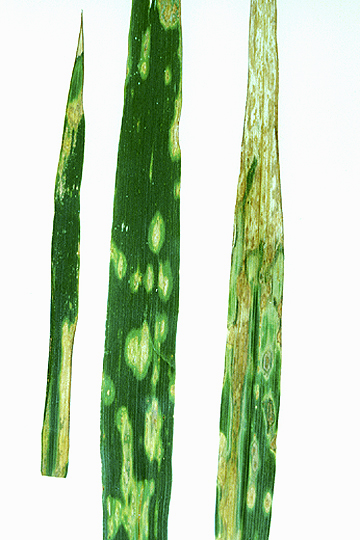DISEASE: Bacterial blight
HOST: Poppy
The disease begins with water-soaked lesions that turn brown to black. They may be surrounded by a translucent ring. Buds, leaves, flowers, and pods are affected.
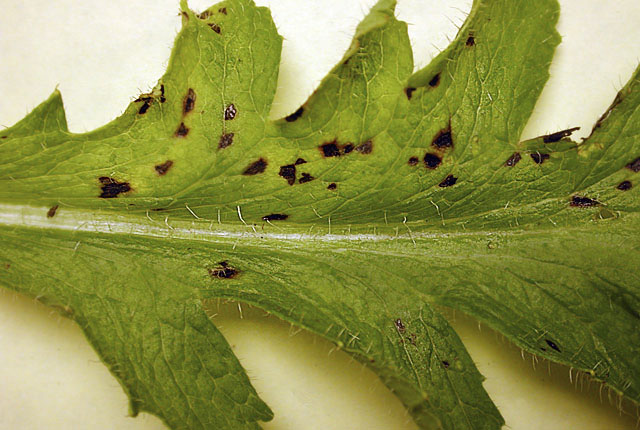
Bacterial blight | Poppy
DISEASE: Bacterial blight
HOST: Poppy (Eschscholzia californica)
PATHOGEN: Xanthomonas campestris pv. papavericola
SOURCE: M. Daughtrey
DISEASE: Bacterial wilt
HOST: Alfalfa
Longitudinal section of defined brown gum pockets on inner surface of root bark.
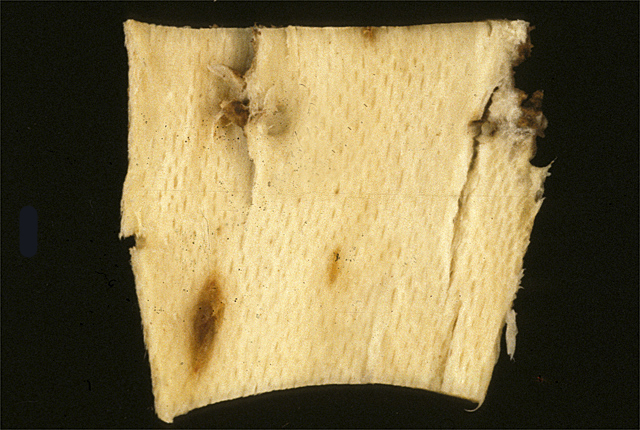
Bacterial wilt | Alfalfa
DISEASE: Bacterial wilt
HOST: Alfalfa (Medicago sativa)
PATHOGEN: Clavibacter michiganensis subsp. insidiosus
SOURCE: S. Thomson
DISEASE: Bacterial wilt
HOST: Alfalfa
Infected plant (left) with typical symptoms of stunting and chlorosis. Other characteristic symptoms are spindly stems and small distorted leaflets. Healthy plant (right).
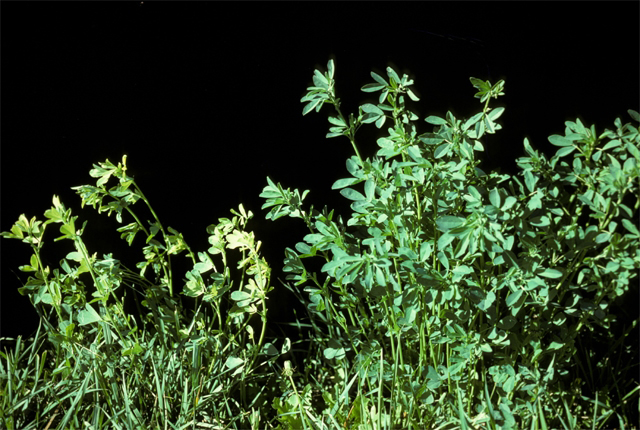
Bacterial wilt | Alfalfa
DISEASE: Bacterial wilt
HOST: Alfalfa (Medicago sativa)
PATHOGEN: Clavibacter michiganensis subsp. insidiosus
SOURCE: S. Thomson
DISEASE: Bacterial wilt
HOST: Alfalfa
Diseased plant with chlorotic leaves.
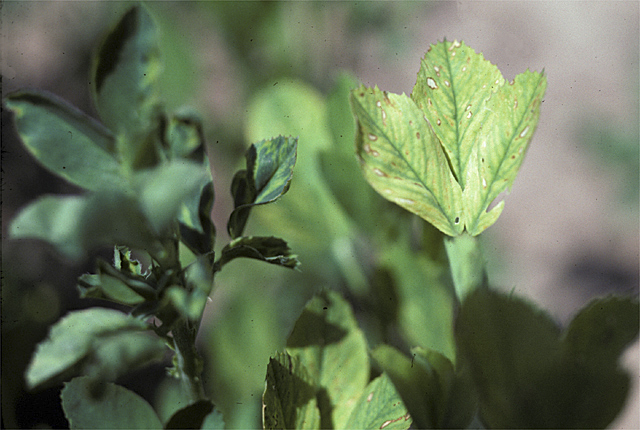
Bacterial wilt | Alfalfa
DISEASE: Bacterial wilt
HOST: Alfalfa (Medicago sativa)
PATHOGEN: Clavibacter michiganensis subsp. insidiosus
SOURCE: S. Thomson
DISEASE: Bacterial wilt
HOST: Alfalfa
Cross sections of diseased roots with defined brown gum pockets on inner surface of bark. Healthy root (upper left). Other sections represent increases in disease severity.
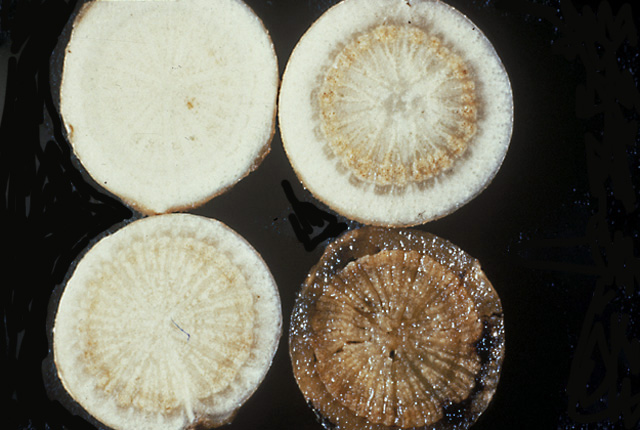
Bacterial wilt | Alfalfa
DISEASE: Bacterial wilt
HOST: Alfalfa (Medicago sativa)
PATHOGEN: Clavibacter michiganensis subsp. insidiosus
SOURCE: L. Claflin
DISEASE: Chocolate spot
HOST: Corn (Maize)
Leaf with dark brown, elongated spots surrounded by broad, yellow halos.
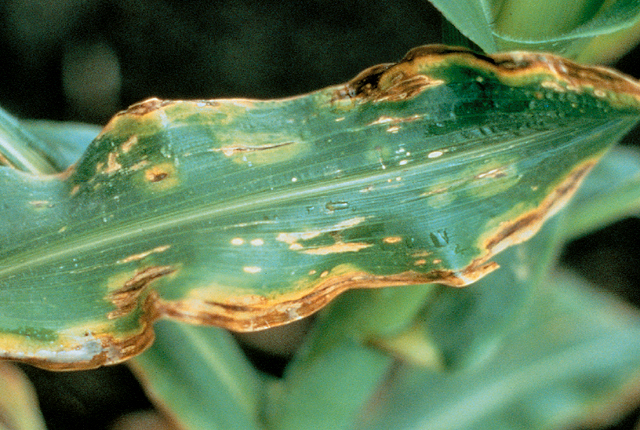
Chocolate spot | Corn (Maize)
DISEASE: Chocolate spot
HOST: Corn (Maize) (Zea mays)
PATHOGEN: Pseudomonas syringae pv. coronafaciens
SOURCE: D. White
DISEASE: Halo blight
HOST: Oat
Oat leaves with oval lesions that darken in time and have distinctive yellow halos.
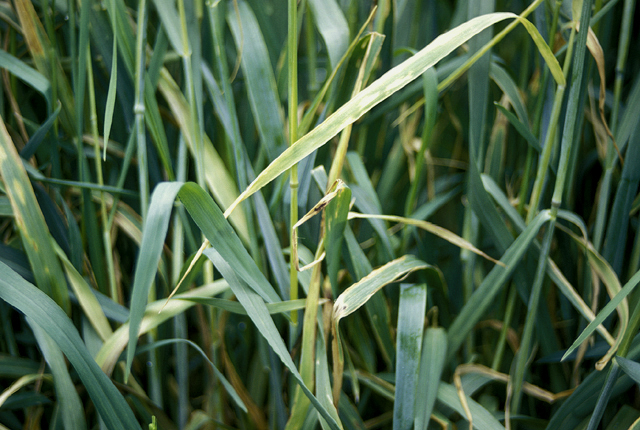
Halo blight | Oat
DISEASE: Halo blight
HOST: Oat (Avena sativa)
PATHOGEN: Pseudomonas syringae pv. coronafaciens
SOURCE: N. Schaad


